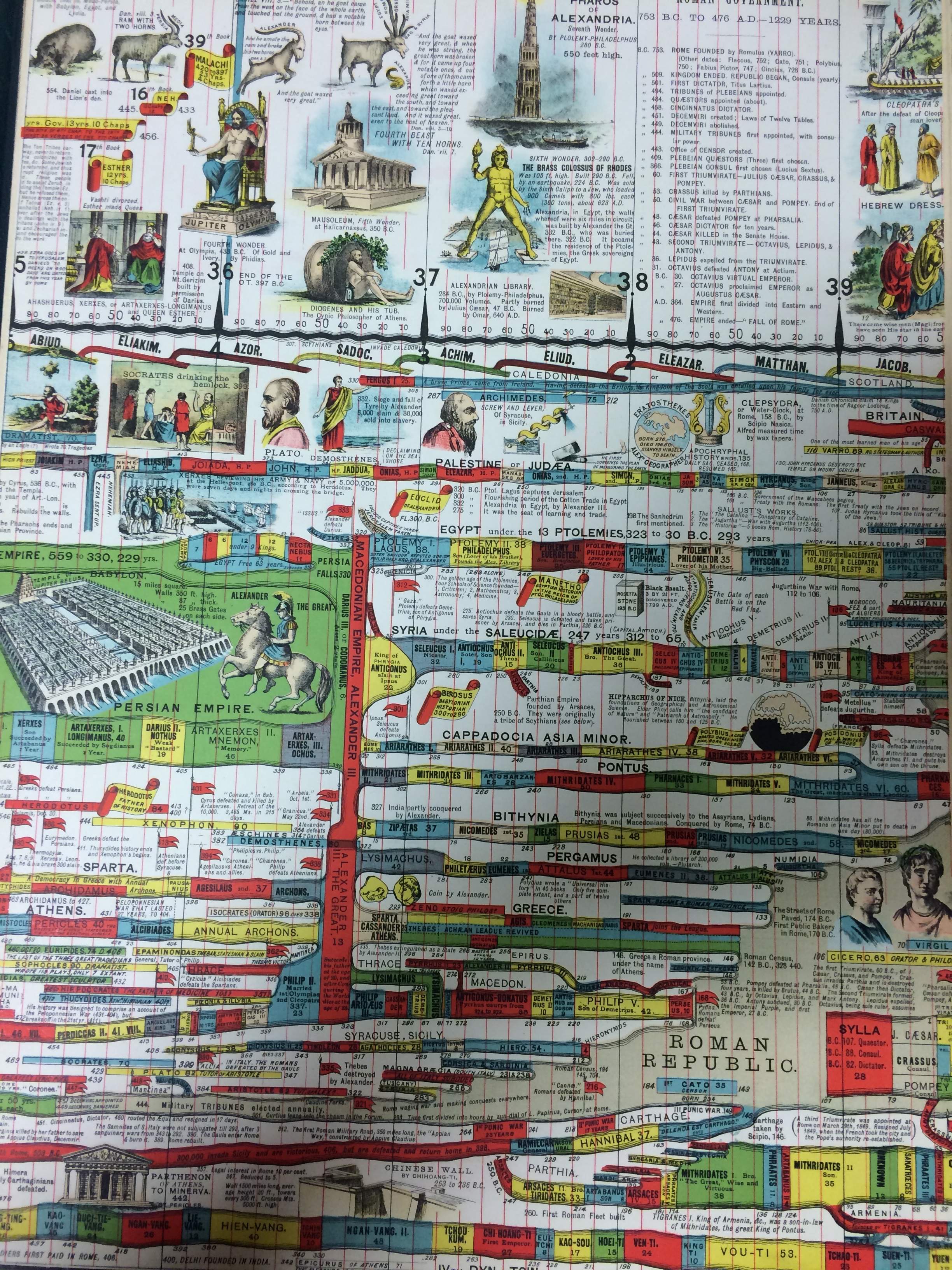Today I was reminded that there are many things about working at a university that are simply wonderful. As I was idly poking about the philosophy and classics floor of The Death Star (affectionate name for UoGlasgow Library - why do so many modern buldings these days have to be built with long, dark grey, panelled exteriors?) I came across an extraordinarily named slab called The Synchronological Chart of Universal History.

Now, many of you may already know about this, and you're thinking, calm down, buddy, yeah this is a thing, but I will not broker any blasé attitude about it, because it is simply one of the most extraordinary documents I've ever seen. It's a Victorian wall chart that is meant to cover the entire Endoeuropean history from the Tower of Babel to the late 19th century.
After exhaustive research (quick google, then wikipedia) I find that it is a much known and talked about thing. Fine, whatever. Finding it on the 10th floor of a library looking all dusty and disregarded: well, I suppose it is similar to finding some beautiful waterfall or pristine upper glen in the highlands; you know people have been there before, but it still feels special, like it was just left there for you to discover.
Here's a peek at the emergence of a single Anglo-Saxon kingdom from around 400BC when the Romans got tired of all the fish suppers and warm beer. All the while, note that Scotland is a single line-kingdom at the top, never ruled by the Romans or the Anglos. Feeedoooooom!!!

The Scottish line goes back before the Romans to 300 BC with Fergus Mór AKA Fergus the Great, Son of Erc of Dál Riata, a linage which can at best be described as mythical (AKA bollocks.) This is what I find most fascinating about the content. It mixes well-documented and generally known history (Roman emperors, European monarchs, emerging nation states) with completely unverifiable legend, and good old fashioned bullshit. It states as fact, for instance, that the mythical Fohi or Yao, founder of China, was in fact the mythical Noah of the Great Flood. I've heard this idea kicked around before, and, well, it's dumb. It also seems that the universe of this universal history doesn't include anything in the Amercian continents before Europeans got there. The author, the American pioneer and missionary Sebastien C. Adams, presents an unsurprising 19th century American Christian worldview, complete with the constant representation anything outside of the Romano-Christian sphere as being savage and barbaric. Here's a good paragraph, around the 6th century AD.
Saxony. A Kingdom in North Germany. The Saxons were a fierce warlike race. The terror of their neighbours. Often attacked France and conquered Britain. After a long series of sanguinary conflicts they were finallly subdued by Charlemagne in 803. Saxony became a Duchy in 880. An electorate in 1806. And a Kingdom in 1806.
Also, the overdramatic sense of causality. This alarming gem:
Battle of Tours, Oct. 10th 732. Charles Martel defeated the Saracaens and saved Europe from Asiatic civilisation.
Ah, and this, from the period of persecution of the Christians by Rome:
250. 7th persecution. Decius Proposes to exterpate Christianity from the Earth!! By sword and fire. Wild Beasts. The wheel. Red-hot iron chairs, and every variety of torture which the most equisite cruelty could invent.
This thing provided a lovely diversion from work for about an hour and a half. Better get back to it. If you want to see it in total, check out the wikimedia commons copy, or just look here for a smaller image.

